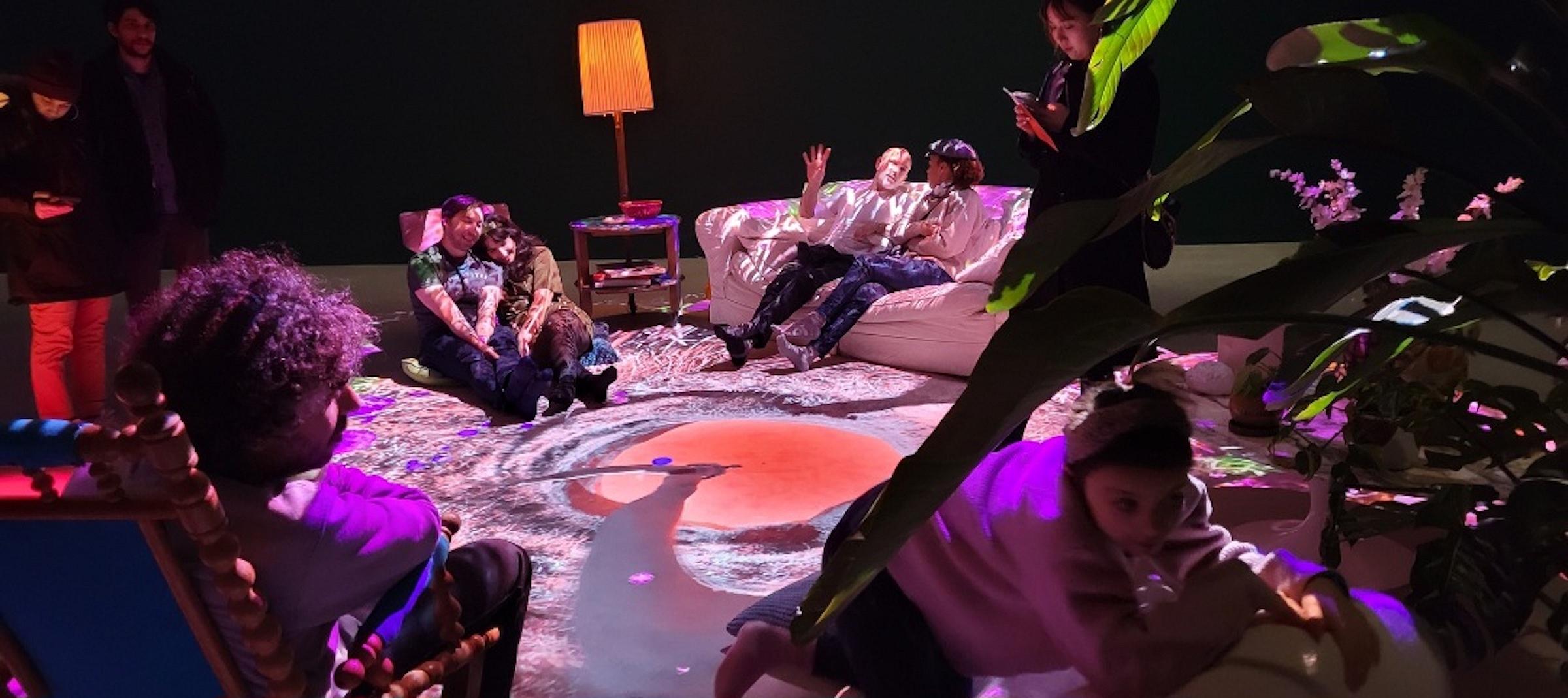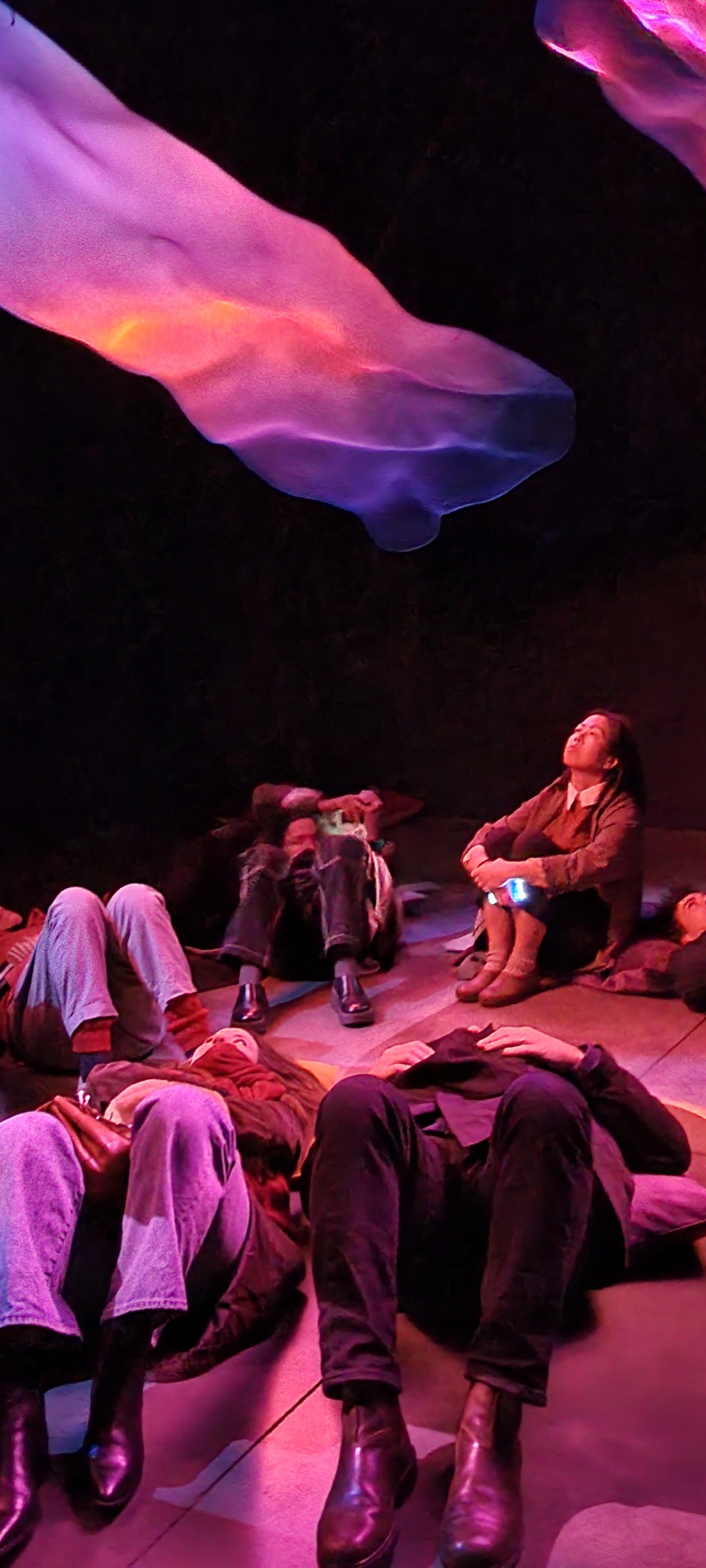Pipilotti Rist: Prickling Goosebumps & a Humming Horizon
Two-part exhibition across two galleries
Hauser & Wirth
542 West 22nd St.
NYC
Through April 13, 2024
Luhring Augustine
531 West 24th St.
NYC
Extended through Feb. 24, 2024
I used to disfavor video art as either seemingly meaningless eye candy or inscrutably clipped narratives. But Swiss visual artist Pipilotti Rist’s Prickling Goosebumps & a Humming Horizon tops my list of #GoHere #DoThis #NYC art this week.
On display across two Chelsea galleries, Rist’s video artwork reincarnates the interiors and exteriors of physical dwelling places, reimagining the life of the outside world and contemplates the life of the human mind. She includes sculptures at both sites — but her colorful, room-sized, enveloping videos are the experiential show stoppers.

“Everything feels quite trippy,” gallery visitor Judith Whitting said with a laugh. “But it’s also quite meditative.”
At Hauser & Wirth, visitors enter an area resembling theater set designs of a living room and a bedroom. Psychedelic colors swirl but stop at the edge of the carpeted areas with mathematical precision. At first glance, it looks as if improv actors have populated the stages, and assumed their roles with ease. But they are gallery visitors. If you take off your shoes, you can enter the sets and become part of the art.
One video installation, “Do Not Abandon Me Again” projects colorful, hypnotic shapes, in a three-minute and 37 second video loop, which would be retrofitted for a purchaser’s bed. Visitors crawled into the bed, under the blankets, engaging in (appropriately) friendly interactions, reminding me of slumber party days. Despite the insistent and suggestively painful name of the piece, the artwork has a relaxing, magical “pixie dust” quality.
“Pipi explained to us as you’re inhabiting this space, light falls on your body,” said Hauser & Wirth associate director, Mary Grace Reeder. “You become almost this painting as the colors move over the contours of your body.”
Some people came to the galleries alone. Adults with children, couples, and friends also stopped by, in no hurry to leave. Almost as if at a coffee shop, they carried on conversations while basking within the videos of brightly colored, moving forms. Instead of artists or art historians curating objects of art — the novelty, and visually playful installations curate small house parties of gallery-goers, who become part of the living art. One visitor, Larry Reid, said he had brought people, at least three or four times to experience the exhibition at both locations.
At Luhring Augustine, the audio video piece titled “Neighbors Without Fences” projects enormous, outdoor nature videos, magnifying images, like flowers, tree branches, leaves, and blades of grass, at a scale that someone the size of a bird or bee would see. With the facade of a clapboard house, complete with outdoor patio furniture, a picnic table with benches welcomes visitors to sit amidst a three-channel video projection. The loops last 32 minutes and 52 seconds, with a modern, electronic soundtrack by Tom Huber. This installation (shown above in the opening video of this article) is priced at $350,000.
Behind the outdoor pavilion, beyond a curtain in a darkened back room, people can sit or lie down on pillows to soak in “Big Skin.” Projected on cloud-like, frosted, acrylic panels, this audio video artwork explores yet another dimension — beyond the inside and outside spaces, where people physically live.

“Big Skin” made me think of an abstract rendition of the phenomenon of phosphenes. That’s when you close your eyes and see flashes, rings, and spots of lights.
“It reminded me of being shrunken to a tiny organism, like a fungus,” said Jean Lee, another Luhring Augustine visitor. “It felt like being transported to a wholly different dimension. It was an other-worldly type of feeling. I really loved it.”
The 10 minute, 41 second audio video installation costs $750,000, which includes the hanging amorphous, floating screens of undulating curves. Whether this experience represents the sensations and lives of our minds, a microscopic view of our world or another realm in the universe is open to interpretations.
Reid had noted everybody seemed happy at both galleries, with the exhibition having a calming effect. It encouraged a sense of community and coming together, even if only for a brief time. The exhibition also highlighted our constant human desire to push our boundaries of experiential sensations — both physically and mentally. And I wondered why?
Humans have a persistent need for experiential sensations that can be helpful or harmful: enjoying amusement rides, thrill-seeking, traveling to far-flung destinations, experimenting with drugs, taking wise and foolish risks, understanding new ideas and perspectives — including in visual art. Although neither a scientist nor a theologian, I suspect this desire serves a biological purpose for survival. As we acquire more experiences, a larger knowledge base better equips us for the unknown. But I also would like to believe that this need is a gift to help us better and more expansively see beauty in the world and in each other.
I left the Pipilotti Rist artwork filled with the following notions: Build community on Earth, here and now, with the people whom you love. Go forward in the world — experience and create what you may. And don’t forget to bring someone to this exhibition.






